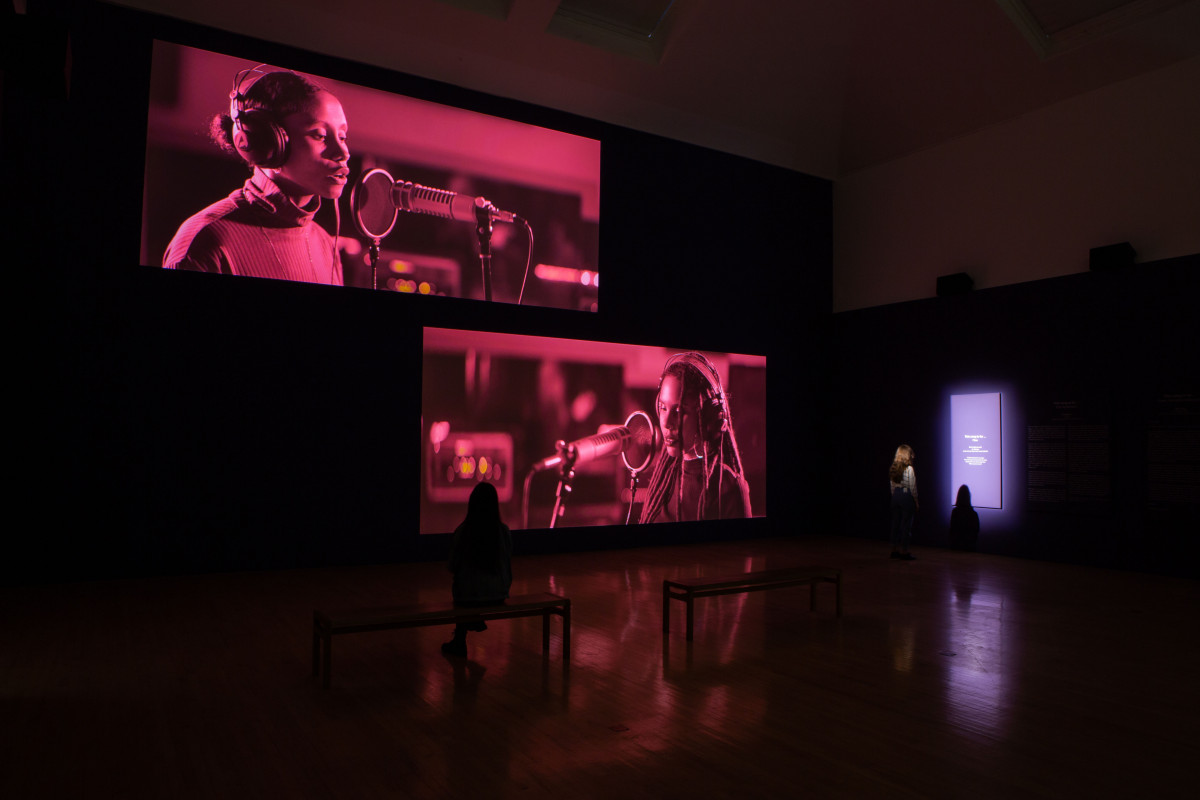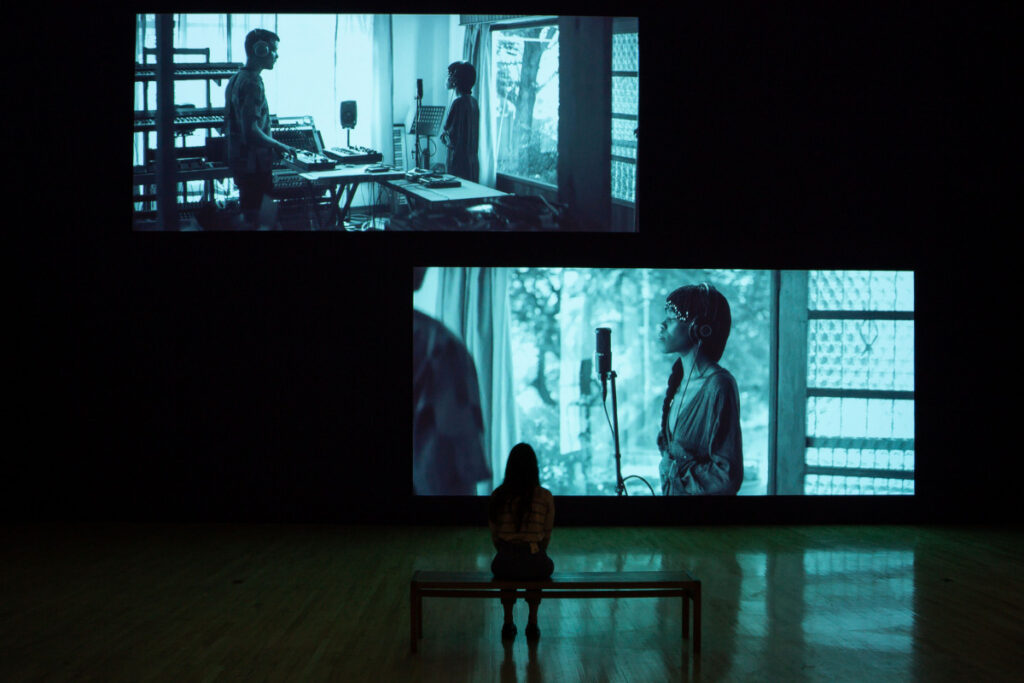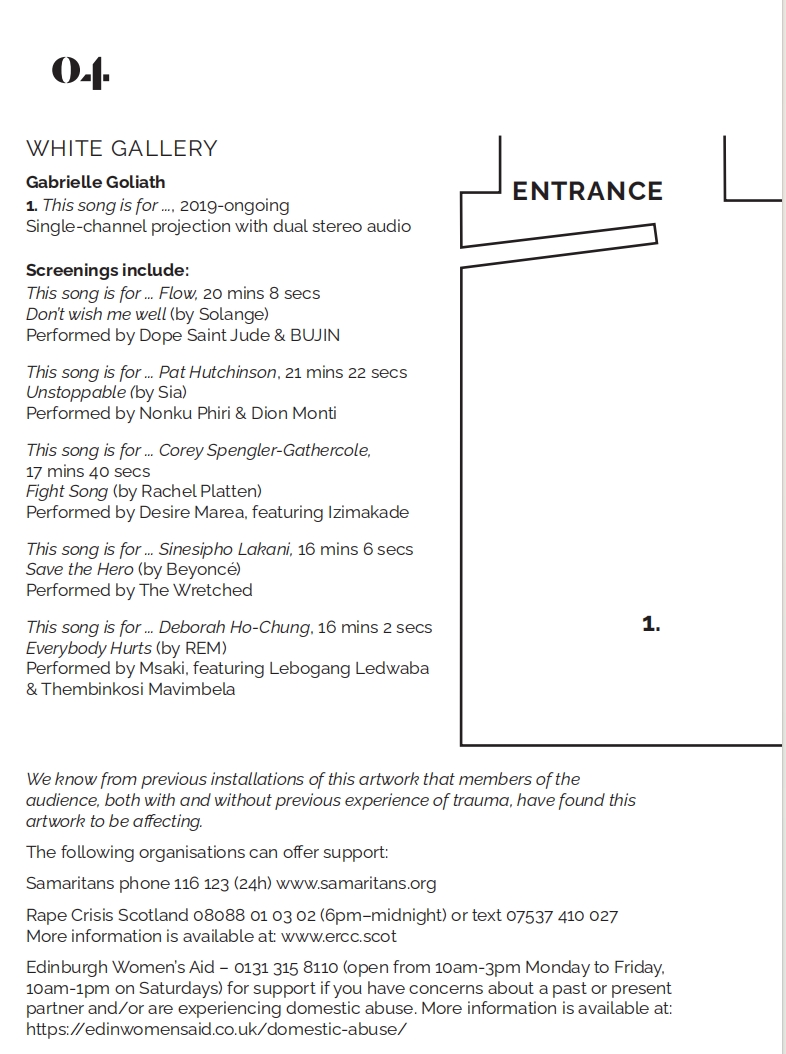Discover the problem: How to integrate modern art installations in a building with historical architecture?
Analysis: The artist attempts to restore the inner world and pain of the victims with emotional art installations, presenting and displaying their demands to the modern world in the old art building.
Introduction
Since 2010, the Talbot Rice Gallery has hosted 71 exhibitions, with only one successfully held in 2020 amid the profound disruptions caused by the COVID-19 pandemic. As international conditions improved in 2021, signalling a resurgence of art and culture, the gallery triumphantly presented three exhibitions. “The Normal,” the inaugural art exhibition of 2021, grappled with themes unmistakably pertinent to the post-pandemic era. As life resumed, artists and art exhibitions sought fresh narratives, steering away from the prevalent focus on the epidemic.
One particularly intriguing installation, “This song is for…,” caught the attention for its relevance to the post-epidemic era and its exploration of violence against black, brown, feminine, queer, and vulnerable bodies. Gabrielle Goliath, the artist behind this thought-provoking work, employed integrated media to portray the potential dangers faced by this generation. (James Clegg, 2021) What captivated me more was the curator’s astute use of lighting and the site, seamlessly blending the work’s atmosphere into the gallery space. This transformed the interior of the classical building into what appeared to be a malleable white box space despite its inherent architectural characteristics.
Curating exhibitions within classical art buildings often presents two challenges: first, the delicate task of harmonising the relationship between the exhibits and the ambience, and second, the necessity of preventing the inherent artistry of the building from overshadowing the narrative structure of the exhibits. The success of the curation at Talbot Rice Gallery in navigating these challenges is evident in the way they curated “This song is for…,” creating an immersive experience that seamlessly merged the contemporary with the classical. This showcased the art world’s resilience in the face of adversity and underscored the gallery’s ability to adapt and innovate within the ever-evolving landscape of post-pandemic art.

figure 1 Gabrielle Goliath
This song is for …, 2019-ongoing
Single-channel projection with dual stereo audio
Background

figure 2 Gabrielle Goliath
This song is for …, 2019-ongoing
Single-channel projection with dual stereo audio
Key Point
Upon encountering Gabrielle Goliath’s artwork, a profound question emerged: how do historic spaces and modern artworks blend classical and contemporary? Talbot Rice Gallery, with its cream-white walls, wooden floors, soaring arched doorways, and Greek stone columns, forms a canvas ideally attuned to the warm yellow sunlight. “This sound is for…” challenged to strike a delicate balance between these classical elements and a contemporary video art installation that would ensure the integrity of the artwork without destroying the enduring relationship between the gallery and its various creations.
This narrative installation, a testament to the post-epidemic era, serves as a catalyst for reawakening the human self-consciousness that may have remained dormant for two years. A pivotal question surfaces in this uncertain post-pandemic landscape: where do we navigate from here? Will the hardships endured during the pandemic gradually fade as it recedes into the past? Are the expressions witnessed reflective of genuine instincts in the context of a pandemic? It compels us to introspect, prompting a return to the core essence of humanity, akin to children seeking solace in their mother’s embrace. We are also endeavouring to explore how modernity can embrace the classics.
During a turbulent social environment that tests our rationality, this introspection allows us to reevaluate ourselves. As we engage in this self-examination, we inevitably question the contemporary and the classical intersection. This inquiry transcends the confines of the gallery walls, echoing a broader exploration of the evolving relationship between tradition and innovation in the ever-shifting landscape of art and human experience.
The Normal is full of dialogue. There is an invisible bond between the audience and the works, which allows them to have a conversation and interaction with the gallery when they are in the exhibition. This sound is for… was presented to the audience in the gallery. Still, it is a dialogue between the audience and the gallery from three perspectives: the light and shadow in the video artwork, the natural light and atmosphere of the gallery, the song’s content and the real world, and the dialogue between the artist and visitors. We should not only consider the problems exposed by the epidemic as a trigger in the post-epidemic era but also see the problem that continues to grow along with the present era: feminism.
In a similar vein, young Chinese curators have applied the specificities of this context to open up a new narrative perspective in the post-pandemic era. Taking my internship exhibition as an example, two young curators constructed a feminist, surrealist and mythical exhibition by incorporating the concepts of the Taoist doctrines of “Xuan”, “Mare”, and “Great Mother Goddess”. As this is an online exhibition, the curators expanded the scale of the show to a national level, with artists from all over the country and 100 pieces of shortlisted works. The curator’s initial approach to the theme was general and vague. Still, as the diversity of the artworks inspired us in real-time, we adjusted the categories and forms of the exhibition, eventually deriving a game with some of the artworks as the main content and an exhibition webpage.
This emerging curatorial model significantly adapted to the drawbacks of the epidemic and gave the exhibition a broad platform to provide viewers with a more comprehensive and exciting format. However, compared to the more traditional and typical curatorial model of Talbot Rice Gallery, such a curatorial model also brings more uncertainty, as we cannot predict the quality and quantity of the artworks, nor can we expect what direction the curatorial programme will eventually go in. As mentioned above, the measure effectively mitigated the issue of blending historical space with contemporary artworks.

Website access:
https://www.trg.ed.ac.uk/exhibition/normal
https://www.gabriellegoliath.com/this-song-is-for
https://www.trg.ed.ac.uk/sites/default/files/2022-01/The%20Normal%20-%20Exhibition%20Guide.pdf
https://rayhsux.github.io/TheGreatMother/